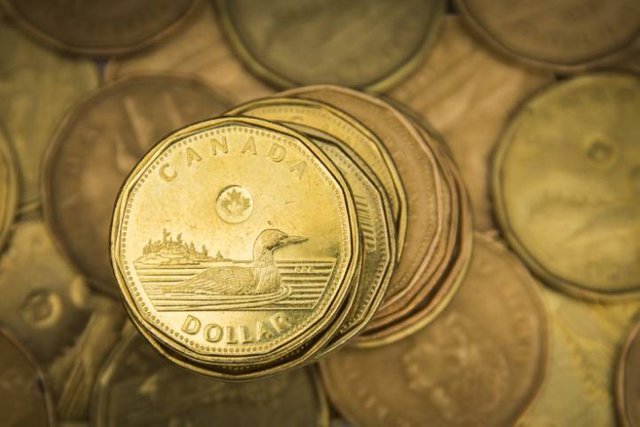The Canadian dollar soared on Wednesday after the Bank of Canada announced its second interest rate hike since July, moving its benchmark rate up to 1 per cent from 0.75 per cent.
The news briefly saw the loonie trading at 82 cents US, the currency’s highest level since June 2015.
Higher interest rates offer lenders in a given economy a better rate of return compared to other jurisdictions. This generally attracts foreign capital, increasing the global demand for the country’s currency, which pushes up its value compared to other currencies. Therefore, an interest rate hike generally causes the exchange rate to rise as well.
A strengthening loonie is great news for Canadian travellers and cross-border shoppers, but the currency swing has sparked worries about the competitiveness of Canadian exports, especially in the manufacturing sector.
Many economists had expected the Bank to wait until October to raise rates, in part out of concern for the impact of a rate hike on the loonie.
“The Canadian dollar rose yet again yesterday and a hike … would no doubt cause it to surge further. That can’t be what the [Bank] wants to see, especially given the recent widening of the trade and current account deficits,” BMO economist Benjamin Reitzes had written in a note to clients this morning, prior to the rate announcement.
But Canada’s central bank appeared relatively unconcerned about the exchange rate, noting that part of the loonie’s current appreciation reflects a general weakening of the U.S. dollar.
“Significant geopolitical risks and uncertainties around international trade and fiscal policies remain, leading to a weaker US dollar against many major currencies,” the Bank noted in a statement.
A pricier loonie also reflects “the relative strength of Canada’s economy,” it added.
Indeed, it is this unexpectedly fast growth that prompted the Bank to raise rates again.
Recent data from Statistics Canada revealed the economy expanded at an annualized rate of 4.5 per cent in the April to June period, far above economists’ consensus forecast of 3.7 per cent.
The Toronto Stock Exchange’s S&P/TSX composite index lost ground following the rate hike.
In particular, the central bank’s move seemed to unsettle those holding shares of the country’s banks, whose earnings growth is in part dependent on home buyers being able to sustain their loan growth, with the sector reversing earlier gains to trade 0.2 percent lower.

Not indicating that the content you copy/paste is not your original work could be seen as plagiarism.
Some tips to share content and add value:
Repeated plagiarized posts are considered spam. Spam is discouraged by the community, and may result in action from the cheetah bot.
Creative Commons: If you are posting content under a Creative Commons license, please attribute and link according to the specific license. If you are posting content under CC0 or Public Domain please consider noting that at the end of your post.
If you are actually the original author, please do reply to let us know!
Thank You!
Downvoting a post can decrease pending rewards and make it less visible. Common reasons:
Submit
Hi! I am a robot. I just upvoted you! I found similar content that readers might be interested in:
http://globalnews.ca/news/3721941/canadian-dollar-loonie-us-interest-rate/
Downvoting a post can decrease pending rewards and make it less visible. Common reasons:
Submit